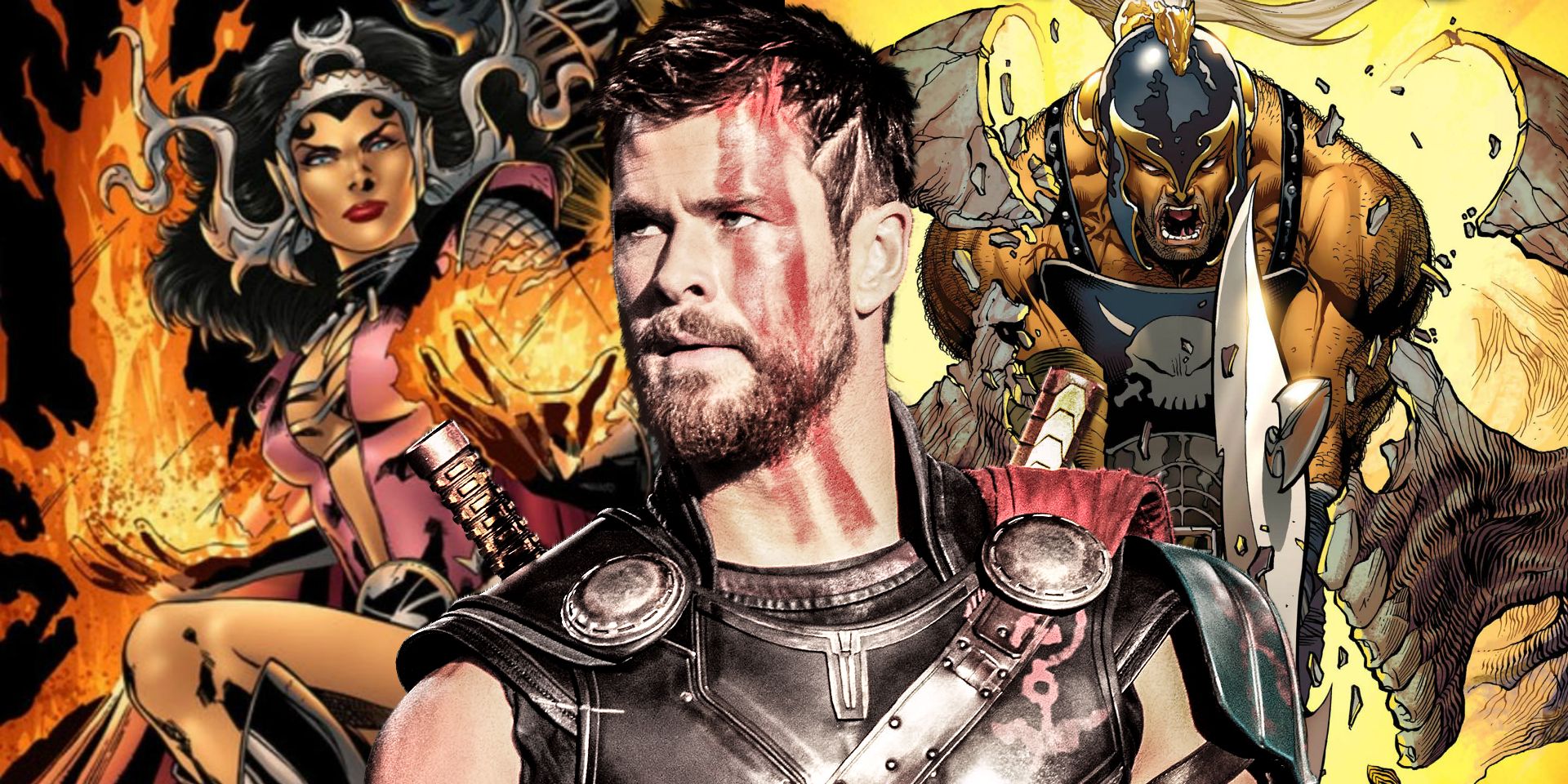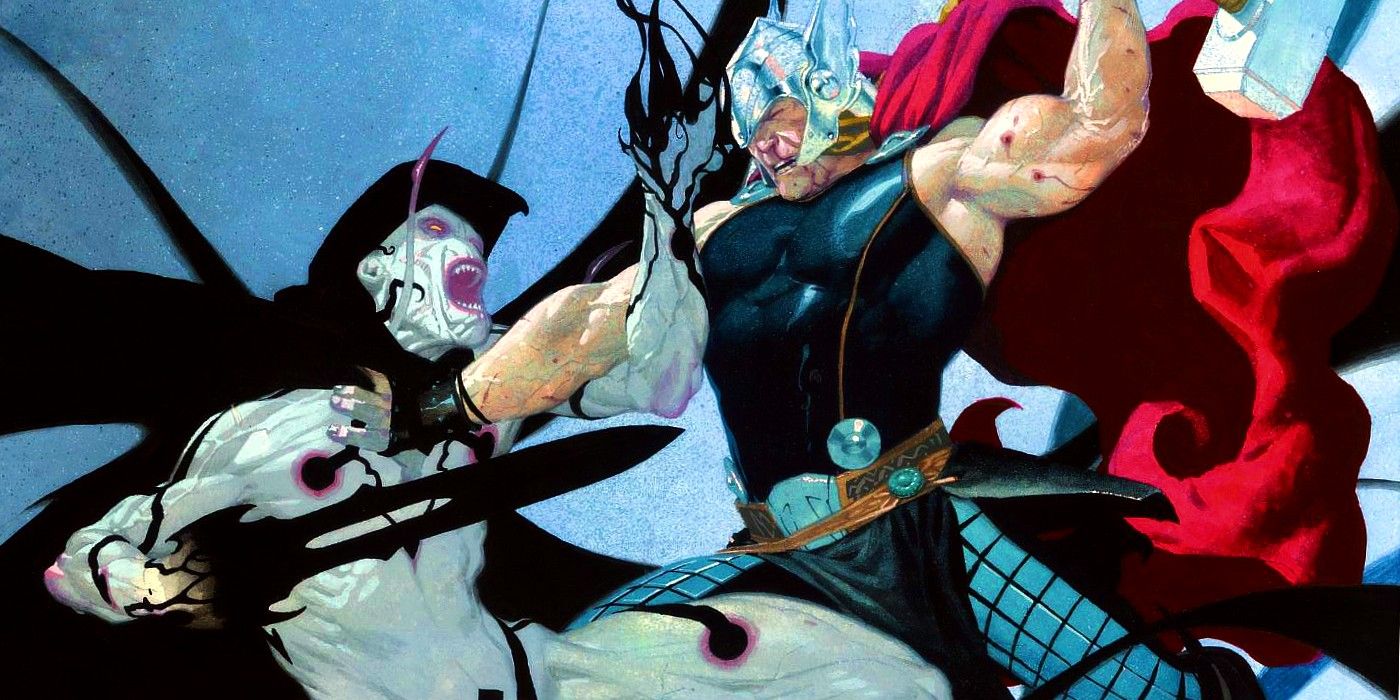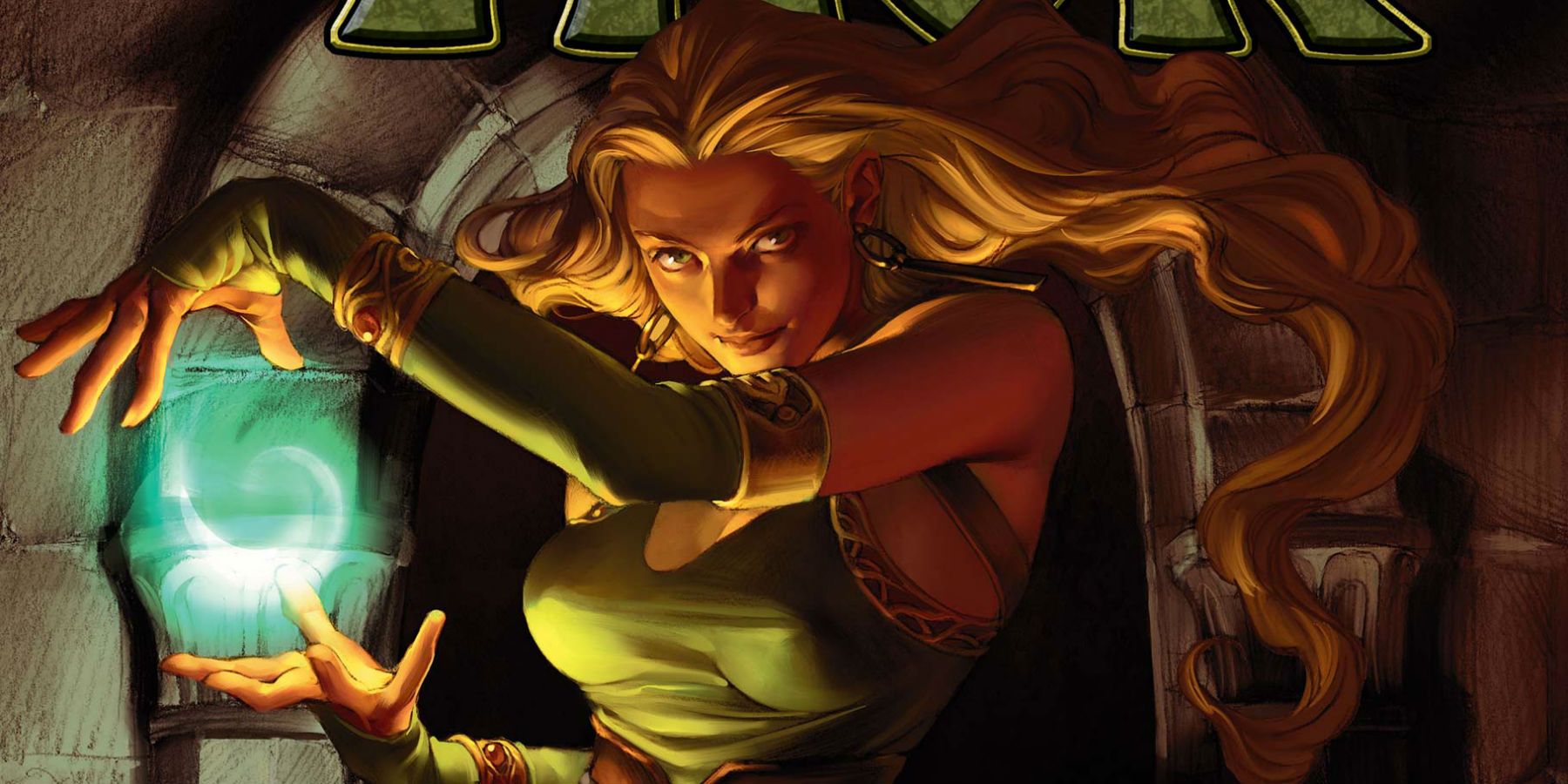Thor is one of Marvel’s most powerful heroes, but the mightiest heroes have the deadliest enemies. Here are some of the God of Thunder’s most intimidating adversaries in Marvel Comics.
MCU fans may remember Malekith the Accursed as the main antagonist of Thor: The Dark World - then again, they may not. Malekith was ultimately one of more forgettable villains in the movies, but the comics are a different story. The dark elf first appeared in Thor #344 by Walt Simonson and has remained one of Thor’s most consistent villains, even going up against other heroes like Iron Man on occasion. Like all dark elves, Malekith has enhanced speed, strength, durability, and an incredibly long lifespan, in part thanks to his healing factor. However, Malekith’s ability to manipulate magical energy is what makes him truly threatening, as it enables him to teleport, create illusions, generate powerful energy blasts, and further enhance his other powers. In addition, Malekith can summon the Wild Hunt, a pack of Asgardian wolves that can track down his foes, and leads the dark elf armies of Svartalfheim, so he has plenty of reinforcements to back him up, though he rarely needs the help. It was Malekith who cut off Thor’s arm in Jason Aaron’s Thor run, making him a villain the God of Thunder won’t soon forget.
Recently, it was announced that Gorr the God Butcher would be the antagonist of the upcoming Thor: Love and Thunder, and if Gorr is anything like he is in the comics, Thor better watch out. Gorr first appeared in Jason Aaron’s Thor: God of Thunder #2 in 2012, making him a relatively new character. Born and raised on a planet with no name, Gorr and his family struggled to survive from day to day. Gorr would often pray to the gods for help, but none ever answered, and after his pregnant wife was killed in an earthquake and his son died of starvation, Gorr lost all faith in the gods. The darkness growing within Gorr drew him to Knull, a dark elder god, who gifted him a powerful weapon: All-Black the Necrosword, which Gorr vows to use to exterminate all the gods as vengeance for his family. The All-Black grants Gorr a variety of powers, including flight, regeneration, dark matter manipulation, superhuman speed, durability, and strength that surpasses the God of Thunder. Indeed, it actually took three versions of Thor to beat Gorr the God Butcher, proving just how powerful of a foe Gorr is.
Thanks to Thor: Ragnarok, Hela is one of Thor’s more well-known adversaries, though her backstory is a bit different in the comics. Hela is still the goddess of the dead, but she is actually an alternate version of Loki's daughter, not Odin's, meaning she is technically of Jotun descent. Still, Hela has all the innate abilities of an Asgardian, putting her at about Thor’s level in terms of raw strength, in addition to her own magical powers, which include illusions, flight, and firing deadly bolts of energy. As the goddess of the dead, Hela can claim the souls of deceased Asgardians and commands all the souls in Hel and Nilfhiem, essentially giving her an undead army. She can also restore Asgardians to life - though she doesn’t use that power as often being evil and all. Hela has come close to claiming Thor’s soul on a number of occasions, and although the God of Thunder usually manages to come out on top, Hela remains one of his most dangerous adversaries.
Fans will remember that Thor couldn't beat Hela in Thor: Ragnarok - he had to release the fire giant Surtur to finish the job. In the comics, Surtur’s first full appearance occurs in Journey into Mystery #99 by Stan Lee, making the fire giant one of Thor’s oldest foes. However, Surtur’s power level is said to be on-par with Odin, which puts him far beyond Thor’s capabilities. As a fire giant of Muspelheim, Surtur stands over 1,000 feet tall and has immense strength and durability, as well as the ability to generate intense fire and heat. Suruter also wields the Sword of Doom, also known as Twilight, which is powerful enough to break dimensional barriers. As impressive as that is, Surtur can become even stronger when near the Eternal Flame, which boosts his power to an incalculable level. When Surtur invaded Asgard during Walt Simonson’s Thor run, it took the strength of Odin, Thor, the heroes of Earth, and even some villains to beat him back, making Surtur one of the most powerful entities the God of Thunder has ever faced.
Asgard is home to plenty of skilled magic users, but Enchantress is among the best. As a sorceress, Enchantress has a wide array of capabilities, but is best known for her powers of seduction and mind-control, which she often attempts to use on Thor and his allies. In fact, Enchantress was actually sent by Odin to seduce Thor away from Jane Foster in Stan Lee’s Journey into Mystery #103, though the plan was unsuccessful, resulting in her banishment from Asgard. While Enchantress has the enhanced strength of an Asgardian, she tends to have her powerful minions, like Skurge the Executioner, do her physical fighting for her. Enchantress has also worked with other notable villains like Baron Zemo and Magneto, though she rarely puts anyone’s interests ahead of her own, and her love for Thor has even put her on the heroes’ side from time to time. Still, Enchantress is a master of manipulation, so trusting her can seriously backfire - and it usually does.
An unstoppable monster fueled by hatred and vengeance, Mangog is one of Marvel's strongest characters. First appearing in Thor #154 by Stan Lee, the monstrous Mangog was imprisoned deep beneath Asgard, but once freed, not even the All-Father could stop his rampage. Mangog’s durability and energy absorption abilities make him incredibly resistant to almost any form of damage, and he can dish out just as much as he can take. Mangog can also shape-shift, which he used to impersonate Odin and take control of Asgard. Cutting Mangog off from any source of hatred or desire for revenge is the only reliable way to weaken him, but considering his own emotions can serve as a power source, beating Mangog in a straight fight is a feat few can boast of.
No list of Thor’s opponents would be complete without his brother Loki, the God of Mischief. While not as physically impressive as his brother, Loki is still far stronger and more durable than humans, being of Jotun descent. However, Loki's actual powers come from the arts of magic and manipulation. In fact, Loki’s sorcery skills were strong enough to briefly usurp Doctor Strange as the Sorcerer Supreme in Donny Cates’ Doctor Strange run. Loki is the kind of villain who always has a trick up his sleeve, ever scheming of a way to fool his enemies and even his allies so he alone can emerge victorious. He may not be as powerful as Mangog or Surtur, but Loki’s slippery nature, genius intellect, and powerful magic will forever make him Thor’s true rival.



